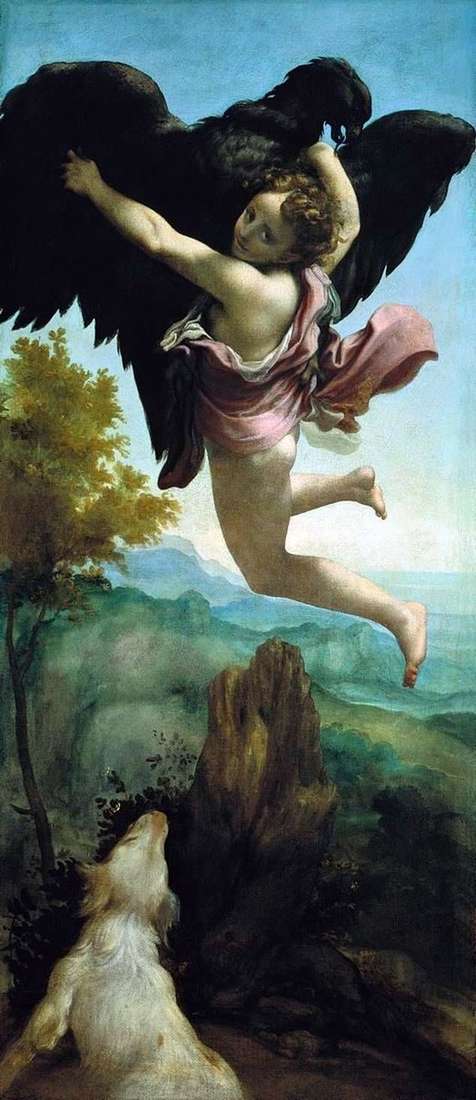
According to the ancient Greek legend, Zeus, the ruler of the gods and mortals, delighted with the beauty of the son of King Tros, the young Ganymede, ordered him to be kidnapped, finding that the land is an unworthy place for a beautiful young man to stay. At the time when Ganymede grazed his father’s herds on the slopes of Ida, an eagle sent by Zeus appeared, grabbed the claws of a young shepherd and flew into the sky. On Olympus, Zeus announced to Ganymede the will of the great gods – to be their cupbearer and kravchim.
Since then, Ganymede, who has received immortality from Zeus, gives ambrosia and nectar to the gods – food and drink of the gods, who give eternal life and eternal youth. Ganymede was one of the three sons of the founder and first king of Troy – King Tros and the nymph Kalliroi. Learning of the abduction of his son, his father gave himself up to despair, but Zeus comforted the king, showing him a son, numbered among a host of gods; He also placed it in the number of zodiacal constellations under the sign of Aquarius. To Ganymede’s father, Zeus gave the golden vine, the symbol of eternal life made by Hephaestus, and a pair of magnificent divine horses.
The myth of Ganymede was popular in ancient Greece and the Roman Empire. Ganymede was one of the most popular characters of antique fine art, as well as art of small forms: plastics, reliefs of sarcophagi, terracotta figurines and vases. In the art of late antiquity Ganymede was depicted dressed in a cloak with a Phrygian cap on his head, with a shepherd’s staff and accompanied by an eagle or a dog. Preserved a beautiful antique statue – a repetition of the statue of the famous Leohar, depicting the abduction of Ganymede eagle.
The usual type in the art of the Renaissance and later time shows him with a clawed eagle or sitting on his back – the bird lifts him into the air: the eagle’s wings are spread in flight or close the youth. In European fine art, the myth is embodied in many works, including the bronze relief of Filaret on the doors of the Cathedral of St. Petra in Rome, a drawing by Michelangelo, frescoes by B. Peruzzi and J. Pordenone, Correggio’s painting, two sculptures by B. Cellini, murals by J. Tintoretto and Annibale Carracci, paintings by P.-P. Rubens and Rembrandt.
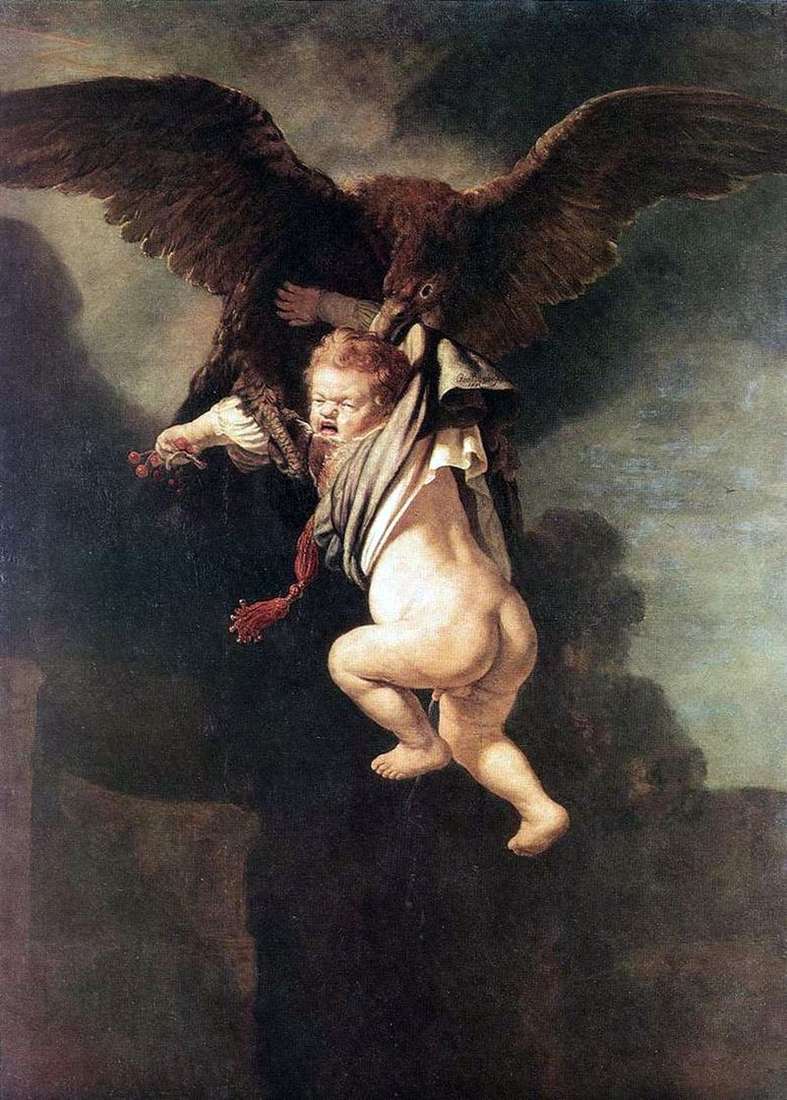 The Abduction of Ganymede (Ganymede in the Claws of an Eagle) by Rembrandt Harmens Van Rhine
The Abduction of Ganymede (Ganymede in the Claws of an Eagle) by Rembrandt Harmens Van Rhine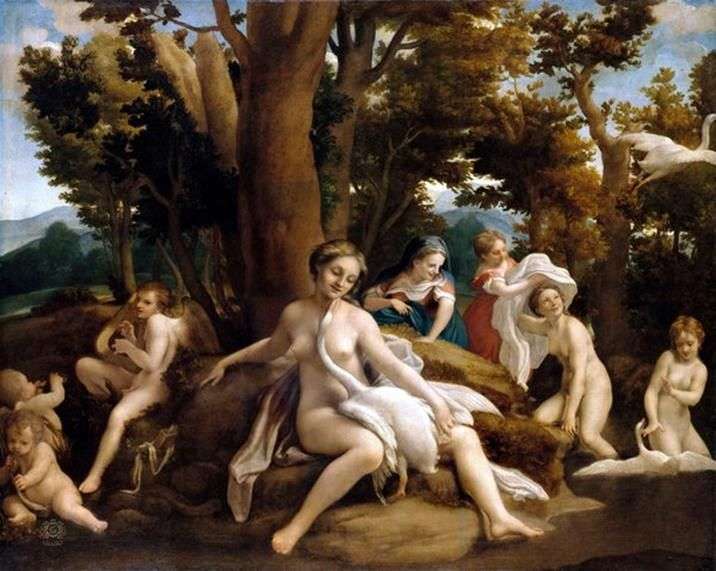 Leda by Correggio (Antonio Allegri)
Leda by Correggio (Antonio Allegri)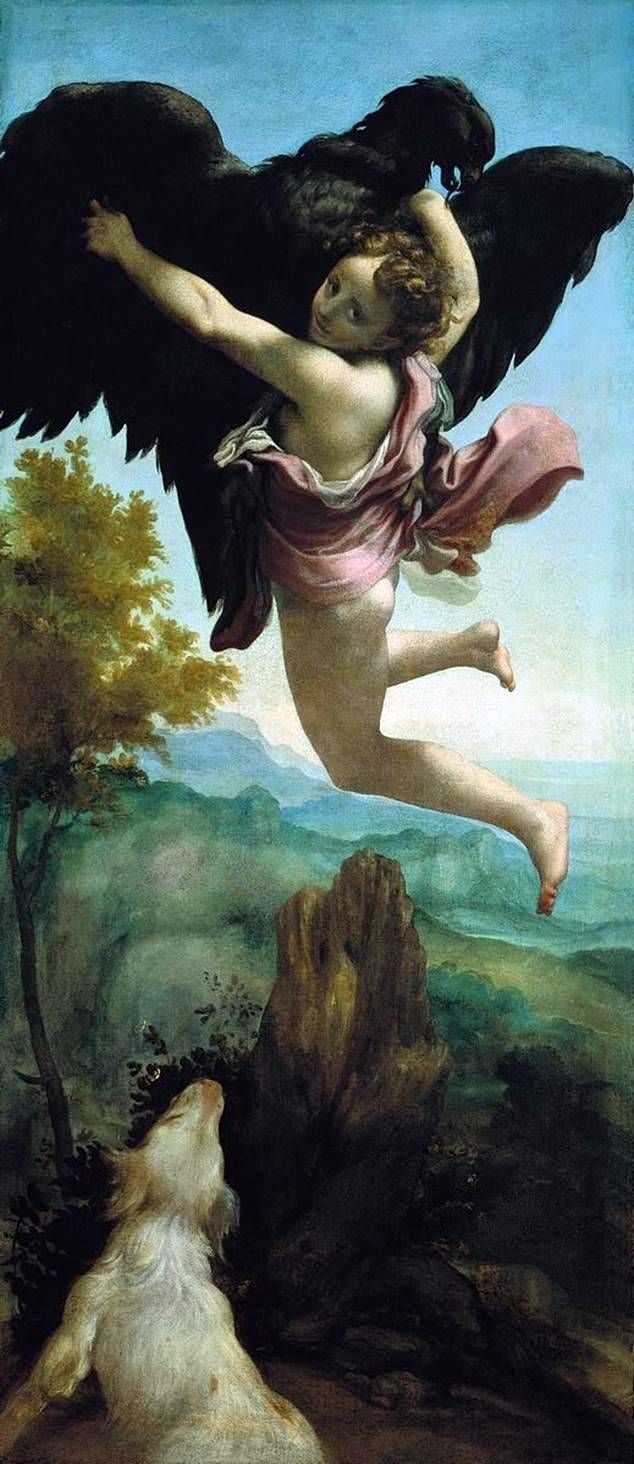 Enlèvement de Ganymède – Correggio (Antonio Allegri)
Enlèvement de Ganymède – Correggio (Antonio Allegri)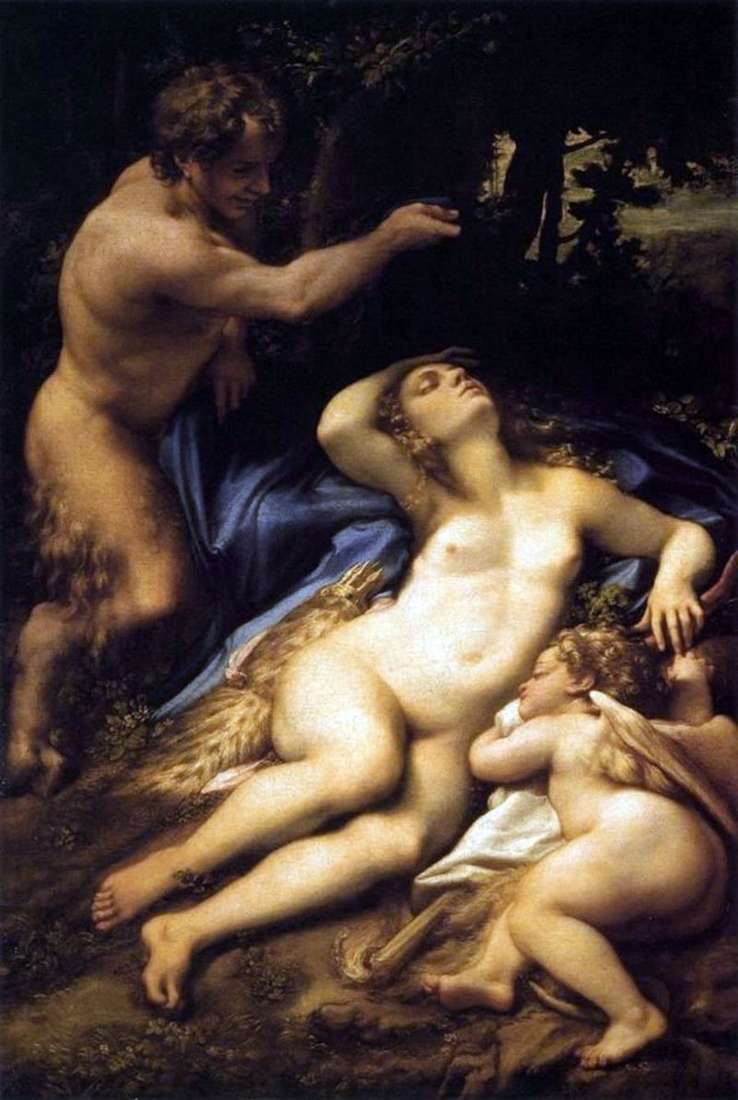 Venus and Cupid, followed by a spy satire by Correggio (Antonio Allegri)
Venus and Cupid, followed by a spy satire by Correggio (Antonio Allegri)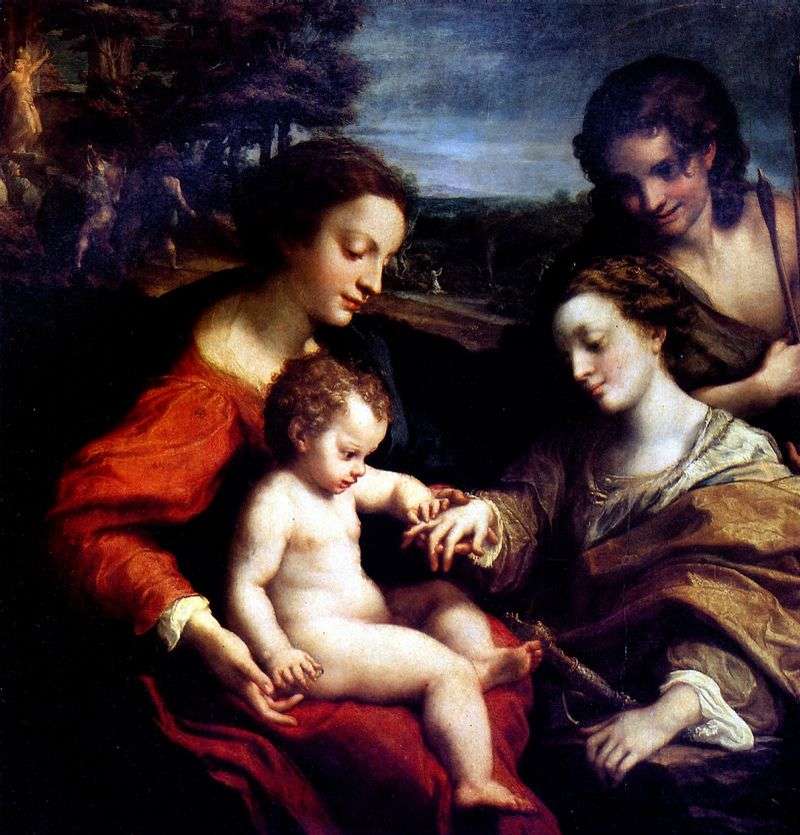 Betrothal of St. Catherine by Correggio (Antonio Allegri)
Betrothal of St. Catherine by Correggio (Antonio Allegri)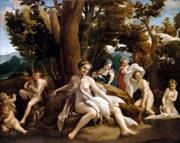 Leda – Correggio (Antonio Allegri)
Leda – Correggio (Antonio Allegri)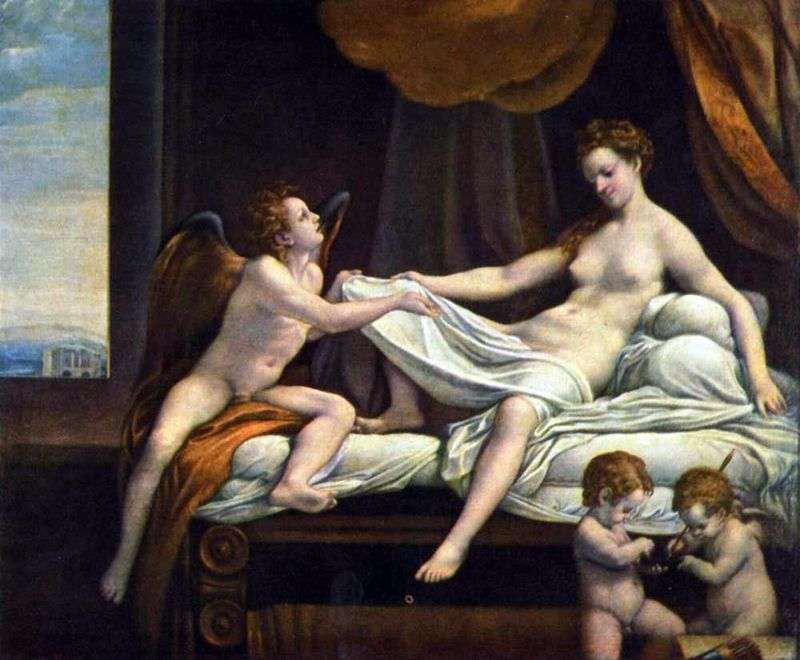 Danae by Correggio (Antonio Allegri)
Danae by Correggio (Antonio Allegri)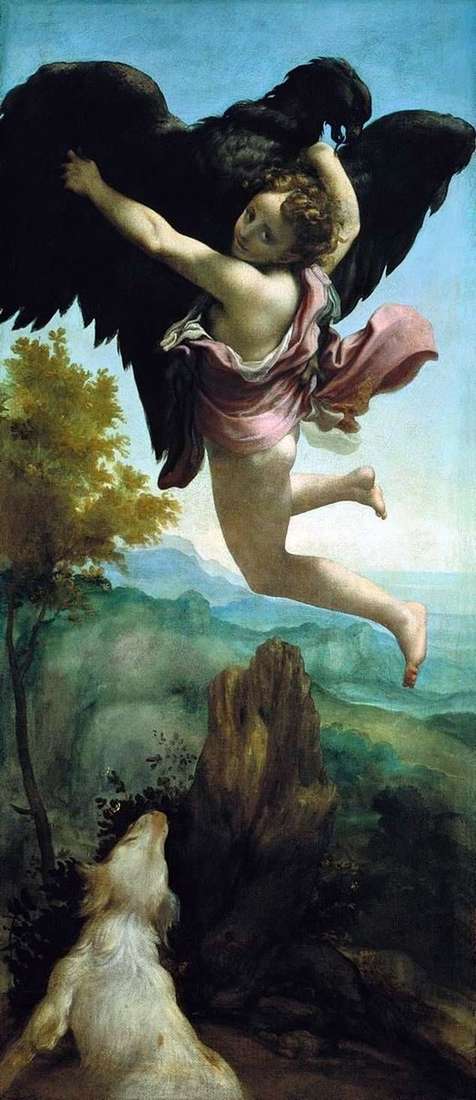 Abducción de Ganimedes – Correggio (Antonio Allegri)
Abducción de Ganimedes – Correggio (Antonio Allegri)